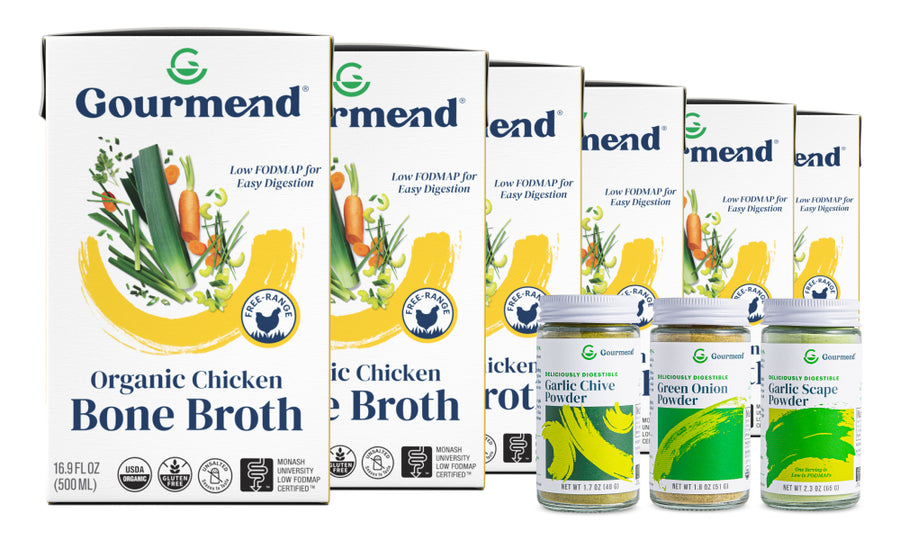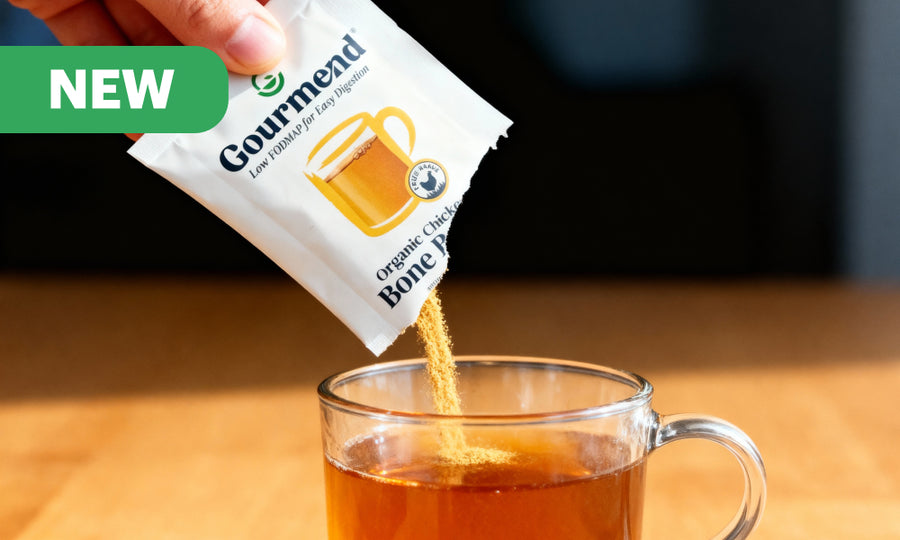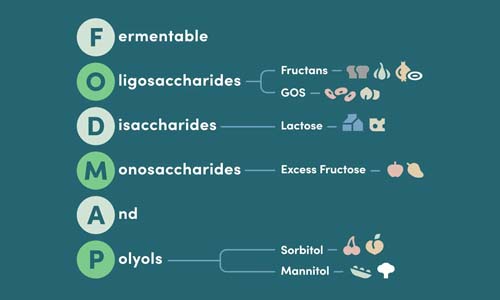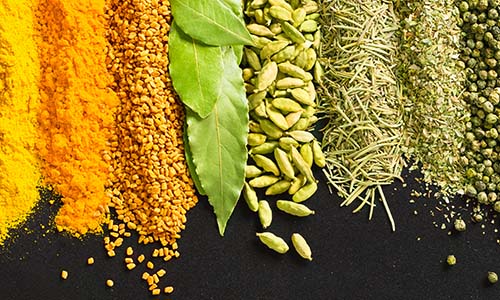Are Potatoes Low FODMAP? Your Complete Guide

What Are FODMAPs and Why They Matter
Understanding FODMAPs
FODMAPs stands for Fermentable Oligosaccharides, Disaccharides, Monosaccharides And Polyols – a group of short-chain carbohydrates that can trigger digestive discomfort in sensitive individuals. These compounds are found naturally in many foods, from fruits and vegetables to grains and dairy products. For a deeper dive into the science and practical tips, see our FODMAP blog for more resources.
Key Takeaways
- White potatoes are completely low FODMAP and have no serving size restrictions.
- Sweet potatoes contain moderate FODMAPs and are low FODMAP only up to ½ cup (75g) per serving.
- Both white and sweet potatoes can be safely enjoyed on a low FODMAP diet with proper portion control.
- FODMAPs are short-chain carbohydrates that can cause digestive discomfort in sensitive individuals.
- Understanding FODMAPs is important for managing digestive issues, especially for those with IBS.
Table of Contents
Here's the thing: FODMAPs aren't inherently "bad" foods. For most people, they're perfectly healthy. But for those with IBS or sensitive digestion, these carbohydrates can ferment in the gut, leading to uncomfortable symptoms like bloating, gas, abdominal pain, and changes in bowel movements. For a clinical overview, see Hopkins Medicine's FODMAP Diet Guide.
- Oligosaccharides
- Found in wheat, onions, garlic, and legumes
- Disaccharides
- Primarily lactose in dairy products
- Monosaccharides
- Excess fructose in certain fruits and sweeteners
- Polyols
- Sugar alcohols in stone fruits and artificial sweeteners
The Role of FODMAPs in IBS
Research shows that up to 75% of people with IBS experience symptom relief when following a low FODMAP approach. The connection lies in how these carbohydrates behave in the digestive system.
When FODMAPs reach the large intestine undigested, they draw water into the bowel and ferment rapidly, producing gas and triggering symptoms in sensitive individuals.
The low FODMAP diet isn't about permanent restriction – it's a systematic approach to identify your personal triggers. By temporarily reducing FODMAP intake, then gradually reintroducing foods, you can pinpoint which specific FODMAPs affect you and in what quantities.
This is where potatoes become particularly interesting. As a staple food across cultures, understanding their FODMAP status helps maintain dietary variety while managing digestive comfort.
Potatoes and FODMAPs: The Basics
 fodmap potatoes">
fodmap potatoes">
Types of Potatoes
Not all potatoes are created equal – both botanically and from a FODMAP perspective. Understanding the different varieties helps you make informed choices for your digestive comfort. For more inspiration on potato-based meals, check out our Low FODMAP Crisp Roasted Baby Potatoes recipe.
Then there's the sweet potato situation. You might be wondering: are sweet potatoes actually potatoes? Botanically speaking, sweet potatoes belong to the morning glory family, while regular potatoes are nightshades. This difference matters for FODMAP content.
FODMAP Content in Potatoes
Here's where the rubber meets the road for anyone following a low FODMAP approach: If you want a comprehensive breakdown of potato FODMAP content, this external guide on low FODMAP potatoes is a helpful resource.
| Potato Type | FODMAP Status | Safe Serving Size | Notes |
|---|---|---|---|
| White Potatoes (all varieties) | Low FODMAP | No restrictions | No detectable FODMAPs |
| Sweet Potatoes | Moderate FODMAP | ½ cup (75g) or less | Contains mannitol |
| True Yams | Varies by type | Check reliable sources | Rarely found in US stores |
White potatoes – whether they're russets, reds, or fingerlings – contain no detectable FODMAPs. This means you can enjoy them freely without worrying about portion sizes or FODMAP stacking.
Sweet potatoes tell a different story. They contain mannitol, a polyol that can trigger symptoms in sensitive individuals. The good news? At ½ cup (75g) or less per serving, sweet potatoes remain low FODMAP and gentle on digestion.
Potato Nutrition and IBS
Beyond their FODMAP status, potatoes offer genuine nutritional benefits that support overall digestive health:
- Resistant Starch: Acts as a prebiotic, feeding beneficial gut bacteria
- Potassium: Supports proper muscle function, including digestive muscles
- Vitamin C: Provides antioxidant support for gut health
- Fiber: Promotes healthy digestion (mainly in the skin)
For those managing IBS, potatoes offer a reliable, nutrient-dense carbohydrate source that won't trigger FODMAP-related symptoms. They're also naturally gluten-free and can serve as an excellent base for countless low FODMAP meals. For more potato inspiration, see our Low FODMAP Recipes blog.
How to Safely Include Potatoes in a Low FODMAP Diet
Buying and Storing Potatoes
You might be wondering: does storage affect FODMAP content? The short answer is that proper storage maintains potato quality and prevents changes that could impact digestion.
When selecting potatoes at the store, avoid any with green patches, sprouts, or soft spots. Green potatoes contain solanine, a compound that can cause digestive upset regardless of your FODMAP sensitivity. Here's what to look for:
- Firm texture: No soft spots or wrinkled skin
- Clean appearance: Free from cuts, bruises, or blemishes
- Natural color: No green tinges or dark spots
- No sprouting: Eyes should be shallow, not sprouted
Proper storage extends potato life and maintains their low FODMAP status. We store ours in a breathable bag or open container, checking weekly for any changes. Sweet potatoes prefer slightly warmer conditions than white potatoes but follow the same dark, dry storage principles.
Preparing and Cooking Potatoes for Low FODMAP Eating
The beauty of potatoes lies in their versatility. Since white potatoes contain no FODMAPs, you can prepare them using virtually any cooking method. However, some techniques work better for sensitive digestion than others. If you love creative potato dishes, try our Golden Cumin Fish with Paprika Spiced Wedges for a flavorful, low FODMAP meal idea.
| Cooking Method | Digestive Impact | Best For | FODMAP Notes |
|---|---|---|---|
| Boiling | Very gentle | Sensitive stomachs | No added fats |
| Steaming | Very gentle | Nutrient retention | Preserves natural texture |
| Roasting | Moderate | Flavor development | Use low FODMAP oils |
| Baking | Gentle | Whole potatoes | Keep portions reasonable for sweet potatoes |
For those managing digestive sensitivities, we recommend starting with gentler cooking methods like boiling or steaming. These techniques break down starches without adding potentially irritating fats or oils.
Low FODMAP Herb-Roasted Potatoes
Here's a simple recipe that showcases how delicious low FODMAP potato preparation can be:
- 2 lbs mixed white potatoes, cut into 1-inch pieces
- 3 tablespoons olive oil
- 2 tablespoons fresh chives, chopped
- 1 tablespoon scallion greens, sliced thin
- 1 teaspoon salt
- ½ teaspoon black pepper
- 1 teaspoon dried rosemary
- Preheat oven to 425°F (220°C)
- Toss potato pieces with olive oil and seasonings
- Spread on baking sheet in single layer
- Roast 25-30 minutes, flipping once halfway through
- Garnish with fresh chives and scallion greens before serving
Notice how we use chives and scallion greens instead of onions or garlic? These alternatives provide that savory, aromatic flavor without the FODMAP load that can trigger digestive discomfort.
This recipe works beautifully with any white potato variety and can easily be adapted for different dietary needs. For dairy-free preparation, the olive oil base keeps everything plant-based, while the herb combination delivers restaurant-quality flavor.
FODMAP Stacking: Understanding Safe Serving Sizes
What is FODMAP Stacking?
FODMAP stacking occurs when you consume multiple foods containing small amounts of FODMAPs that add up to a problematic total load. Think of it like filling a bucket – each food adds a little water, and eventually, the bucket overflows.
Here's how stacking works in practice: A small serving of sweet potato (green light) plus a small serving of eggplant (green light) plus some cabbage (green light) might collectively push you into amber or red territory for total FODMAP load.
- Green Light Foods
- Low FODMAP at tested serving sizes
- Amber Light Foods
- Moderate FODMAP – eat with caution
- Red Light Foods
- High FODMAP – avoid during elimination phase
Are Potatoes at Risk for Stacking?
The great news about white potatoes: they present zero stacking risk. Since they contain no detectable FODMAPs, you can pair them freely with other low FODMAP foods without worrying about cumulative effects.
Sweet potatoes require more attention. At ½ cup (75g) per serving, they remain low FODMAP. But if you're planning a meal with multiple moderate-FODMAP foods, you'll want to consider the total load.
We've found that mixing white and sweet potatoes in dishes like roasted vegetable medleys allows you to enjoy the flavor complexity of sweet potatoes while keeping FODMAP levels comfortable. A 50-50 mix gives you variety without pushing portion limits.
Practical Tips for FODMAP Stacking
Managing FODMAP stacking doesn't require complex calculations – just some smart meal planning strategies. We've developed a simple approach that keeps potato-based meals both delicious and digestive-friendly.
When combining potatoes with other ingredients, consider the cumulative FODMAP load across your entire meal. Here's how we approach it:
- Start with white potatoes as your base: They provide substance without FODMAP concerns
- Add one moderate-FODMAP food per meal: Choose sweet potato OR eggplant OR cabbage, not all three
- Fill remaining space with green-light vegetables: Carrots, bell peppers, zucchini, spinach
- Season with low FODMAP herbs and spices: Our low FODMAP recipe collection shows dozens of flavor combinations
For sweet potato lovers, try this stacking-smart approach: Use ⅓ cup sweet potato mixed with 1 cup white potato in dishes like hash or roasted vegetable medleys. You get the sweet potato flavor without approaching the ½ cup threshold.
Recipe modification is your friend here. Traditional recipes calling for large amounts of sweet potato can be adapted by substituting half the sweet potato with white potato or other low FODMAP root vegetables like parsnips or turnips.
Additional Resources and Support
Tools and Apps
Navigating the low FODMAP diet becomes much easier with the right digital tools. The Monash University FODMAP app remains the gold standard for checking FODMAP content and serving sizes, including detailed information about different potato varieties.
- Monash University FODMAP Diet: Original research-based app with traffic light system
- FODMAP Friendly: Additional testing data and certified product listings
- Fig App: Scans product barcodes for FODMAP and other dietary restrictions
These apps update regularly as new research emerges. We recommend checking them when trying new potato varieties or unfamiliar brands, especially for processed potato products that might contain high-FODMAP additives.
Finding Expert Guidance
While potatoes are straightforward on the low FODMAP diet, working with a registered dietitian trained in FODMAP protocols can accelerate your success. They provide personalized guidance that accounts for your specific symptoms, food preferences, and lifestyle.
Many dietitians now offer virtual consultations, making expert guidance more accessible than ever. Look for practitioners with specific FODMAP certification through Monash University or similar recognized programs.
Extra Support
Beyond professional guidance, numerous resources can support your low FODMAP journey with potatoes and other ingredients. Our low FODMAP recipe conversion tool helps transform your favorite potato dishes into gut-friendly versions. For more on low FODMAP cooking, visit our Learn blog for tips and guides.
Online communities provide peer support and recipe inspiration. Many users share creative ways to incorporate both white and sweet potatoes while managing portion sizes and FODMAP stacking concerns.
Making Potatoes Work for Your Low FODMAP Journey
Potatoes deserve a prominent place in your low FODMAP meal planning. White potatoes offer unlimited versatility without FODMAP concerns, while sweet potatoes provide additional flavor options when enjoyed in appropriate portions.
The key to success lies in understanding the difference between these potato types and applying smart portioning strategies. Whether you're roasting, boiling, or baking, potatoes provide the satisfying, nutrient-dense foundation that makes low FODMAP eating both sustainable and enjoyable.
Remember that individual tolerance varies, and what works for one person may need adjustment for another. Start with the established guidelines – unlimited white potatoes, moderate sweet potato portions – then fine-tune based on your personal response.
With proper preparation techniques and mindful portioning, potatoes can anchor countless delicious, gut-friendly meals. Focus on what you can enjoy rather than what you're avoiding, and let potatoes be the versatile, comforting staple they're meant to be.
Armed with this knowledge about potato FODMAP content, storage, preparation methods, and stacking considerations, you're well-equipped to make potatoes a confident, delicious part of your digestive wellness journey. Whether you're managing IBS symptoms or simply seeking gentler nutrition, potatoes offer both comfort and nourishment without compromise.
Check out our Low Fodmap Bundles
Frequently Asked Questions
Are potatoes ok for IBS?
Yes, potatoes are generally well tolerated for people with IBS when eaten in moderate amounts. They are naturally low in FODMAPs, meaning they’re unlikely to trigger digestive symptoms like bloating or cramping. However, preparation matters—avoid adding high FODMAP toppings like onion or garlic to keep them gut-friendly.
What kind of potatoes are low in FODMAP?
Most common potatoes such as white, red, and Yukon Gold are low FODMAP when consumed in typical serving sizes (about 1 medium potato or 150 grams). Sweet potatoes are a bit trickier; small portions can be low FODMAP, but larger servings may contain moderate amounts of FODMAPs like mannitol, so portion control is key.
Which vegetables are not FODMAP?
Vegetables low in FODMAP include carrots, zucchini, spinach, cucumber, green beans, and the green parts of scallions and leeks. These offer great flavor and nutrients without triggering IBS symptoms. Avoid high FODMAP veggies like onion bulbs, garlic, cauliflower, and asparagus, which can cause digestive discomfort.
Can you eat baked potatoes on a low FODMAP diet?
Absolutely, baked potatoes are a great option on a low FODMAP diet as long as you keep the toppings simple and gut-friendly. Stick to low FODMAP additions such as chives, lactose-free sour cream, or safe herbs to keep the dish flavorful and easy on digestion. Avoid common triggers like garlic butter or onion powder.
What food calms an IBS flare-up?
During an IBS flare-up, gentle, bland, and easy-to-digest foods help soothe the gut. Bone broth, like Gourmend’s organic, low FODMAP broths, provides hydration, minerals, and comforting warmth without irritating ingredients. Other calming foods include plain rice, cooked carrots, and small amounts of low FODMAP fruits like bananas or blueberries.
Do potatoes cause bloating?
Potatoes themselves don’t typically cause bloating since they’re low FODMAP and easy to digest for most people. However, preparation and portion size matter—fried potatoes or those cooked with high FODMAP ingredients can lead to discomfort. Listening to your body and choosing simple, clean preparations helps keep bloating at bay.





